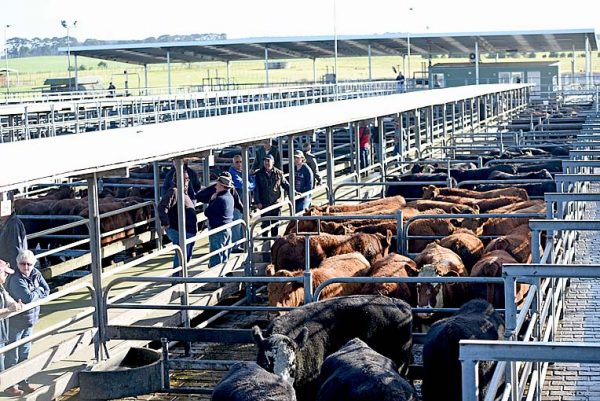
GRANT District Council has released its 10 year management blueprint and master plan for the Glenburnie Saleyards.
The saleyards is one of the region’s largest community assets, with more than $135m worth of livestock transactions recorded in 2016/17.
The plan aims to foster good management and sustainable outcomes with a focus on continual improvements at the sprawling livestock selling centre.
According to the masterplan adopted recently by elected members, the saleyards is the largest livestock exchange facility in the Limestone Coast.
The livestock centre underpins seven livestock agencies and the saleyards itself is valued at $14.2m.
According to 2016/17 figures, nearly 80,000 cattle and more than 165,000 lambs/sheep flowed through the centre.
This compares with one million sheep at Hamilton, about 75,000 cattle at Warrnambool and Naracoorte, as well as just 8645 at Millicent.
Similar to many selling centres across southern Australia, the Glenburnie Saleyards has reported a downward trend in cattle and sheep/lambs numbers.
This downward slide is evident given in 2008/09 the exchange attracted nearly 130,000 head of cattle and 244,600 sheep/lambs.
The document – which explores growth avenues, stock number predictions and threats – revealed direct and online selling was a major risk to the financial performance and growth of the exchange.
“The prime objective of council in the management of the saleyards will provide and plan for infrastructure that allows safe, convenient and viable transactions of stock in the region,” the 2018-2028 blueprint said.
According to the blueprint, it is important for the saleyards to foster relationships with agents to risk losing business to direct and online selling.
“The facility must strive to maintain its reputation for being the main selling centre in the region by providing a high quality, cost effective and efficient service to both agents and buyers,” the lengthy document said.
The blueprint outlines a number of strategies, including the need to develop a marketing plan, continued consultation with agents, buyers and sellers, along with working with peak groups such as Meat and Livestock Australia.
Council will also seek to pursue funding partners to undertake infrastructure projects.
The plan also foreshadows the need to investigate partnership opportunities with private sector investors for the “development” of saleyards operations and projects.
“Council’s fundamental role will provide services to the community and its saleyards is a means to support this,” the 10 year masterplan said.
Future projects listed for consideration include the need to investigate solar energy, rainwater catchment, holding pen configurations, a cattle yard roof, improved security and sheep scanners.
This follows Victoria implementing compulsory electronic tagging of sheep earlier this year.
Operating since its opening in June 1977, the saleyards has 196 cattle and 333 sheep selling pens and is a European Union accredited facility.
The saleyards is owned and managed by Grant District Council.
At any one time, the livestock exchange has a holding capacity of 2400 cattle and 17,000 sheep.








